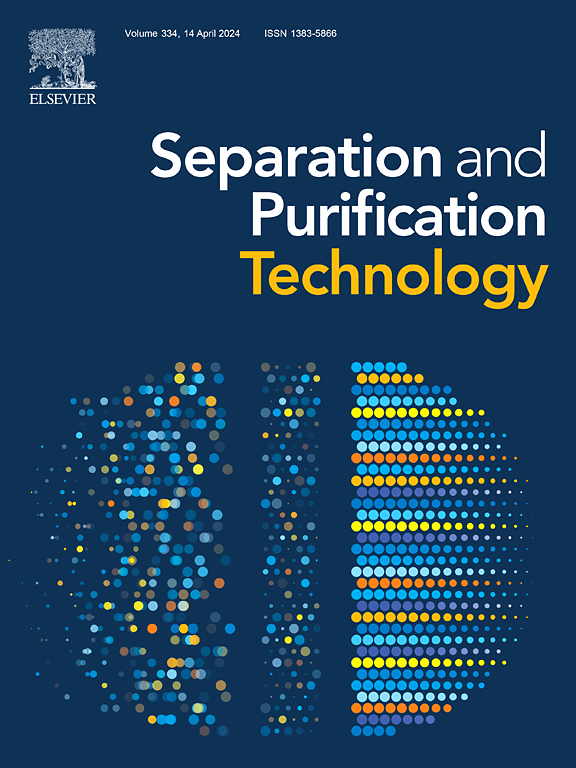Synthesis and selenium vacancy-induced catalytic enhancement of CoSe2 for efficient electrocatalytic nitrate reduction
IF 8.1
1区 工程技术
Q1 ENGINEERING, CHEMICAL
引用次数: 0
Abstract
The electroreduction of nitrate (NO3RR) offers an environmentally friendly alternative to the Haber-Bosch process for ammonia (NH3) synthesis. However, the complex reaction pathway and diverse product distribution pose challenges to achieving efficient NH3 synthesis. Therefore, the rational design and preparation of high-performance electrocatalysts are crucial for the degradation of NO3RR. In this study, a selenium vacancy-engineered CoSe2 supported on carbon felt (CoSev/CF) was synthesized via a hydrothermal method. The nanostructure, the interaction between Se and Co, and the formation of selenium vacancies contribute to the generation of abundant active sites, modulation of the electronic structure, and enhancement of substrate adsorption. Consequently, CoSev/CF exhibits excellent electrocatalytic performance for NO3RR. As a result, the CoSev/CF catalyst demonstrates a remarkable Faraday efficiency (FE) for ammonia synthesis, achieving a value of 98.62 %, with an exceptionally high ammonia production rate of 4.63 m g·h−1 cm−2 in a solution comprising 0.1 M Na2SO4 and 0.1 M NaNO3 at a potential of − 0.8 V relative to the reversible hydrogen electrode (RHE).


CoSe2高效电催化还原硝酸盐的合成及硒空位诱导催化增强
硝酸(NO3RR)的电还原为氨(NH3)合成的Haber-Bosch工艺提供了一种环保的替代方法。然而,复杂的反应途径和多样化的产物分布给实现高效的NH3合成带来了挑战。因此,合理设计和制备高性能电催化剂对NO3RR的降解至关重要。本研究通过水热法合成了碳毡负载的硒空位工程CoSe2 (CoSev/CF)。纳米结构、硒和钴的相互作用以及硒空位的形成有助于丰富活性位点的产生、电子结构的调节和底物吸附的增强。因此,CoSev/CF对NO3RR表现出优异的电催化性能。结果表明,CoSev/CF催化剂在氨合成方面表现出了显著的法拉第效率(FE),达到98.62 %,在含有0.1 m Na2SO4和0.1 m NaNO3的溶液中,相对于可逆氢电极(RHE),在 − 0.8 V电位下,氨的产率高达4.63 m g·h−1 cm−2。
本文章由计算机程序翻译,如有差异,请以英文原文为准。
求助全文
约1分钟内获得全文
求助全文
来源期刊

Separation and Purification Technology
工程技术-工程:化工
CiteScore
14.00
自引率
12.80%
发文量
2347
审稿时长
43 days
期刊介绍:
Separation and Purification Technology is a premier journal committed to sharing innovative methods for separation and purification in chemical and environmental engineering, encompassing both homogeneous solutions and heterogeneous mixtures. Our scope includes the separation and/or purification of liquids, vapors, and gases, as well as carbon capture and separation techniques. However, it's important to note that methods solely intended for analytical purposes are not within the scope of the journal. Additionally, disciplines such as soil science, polymer science, and metallurgy fall outside the purview of Separation and Purification Technology. Join us in advancing the field of separation and purification methods for sustainable solutions in chemical and environmental engineering.
 求助内容:
求助内容: 应助结果提醒方式:
应助结果提醒方式:


